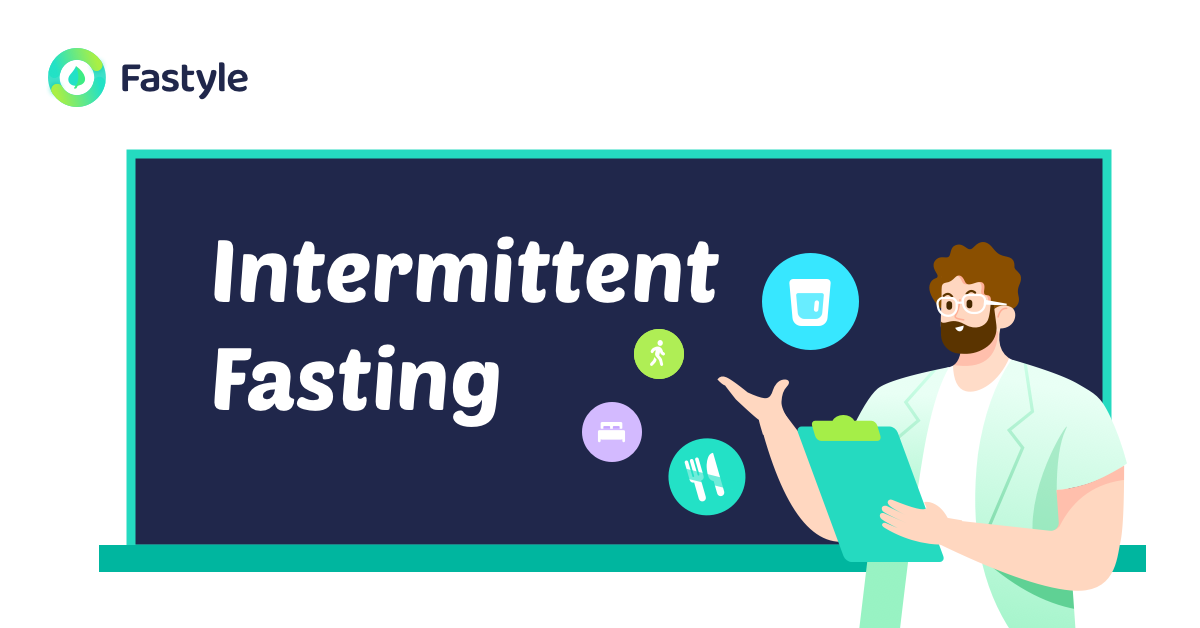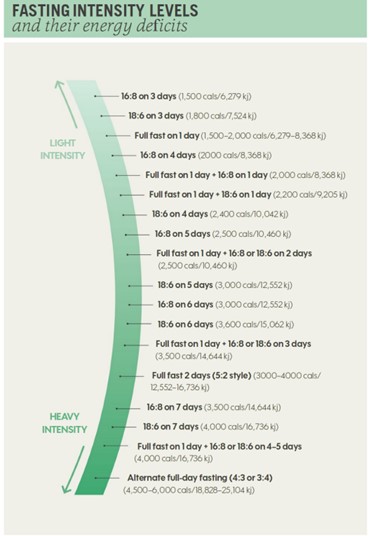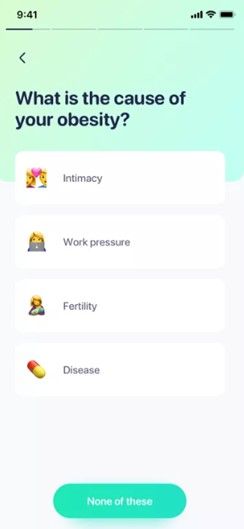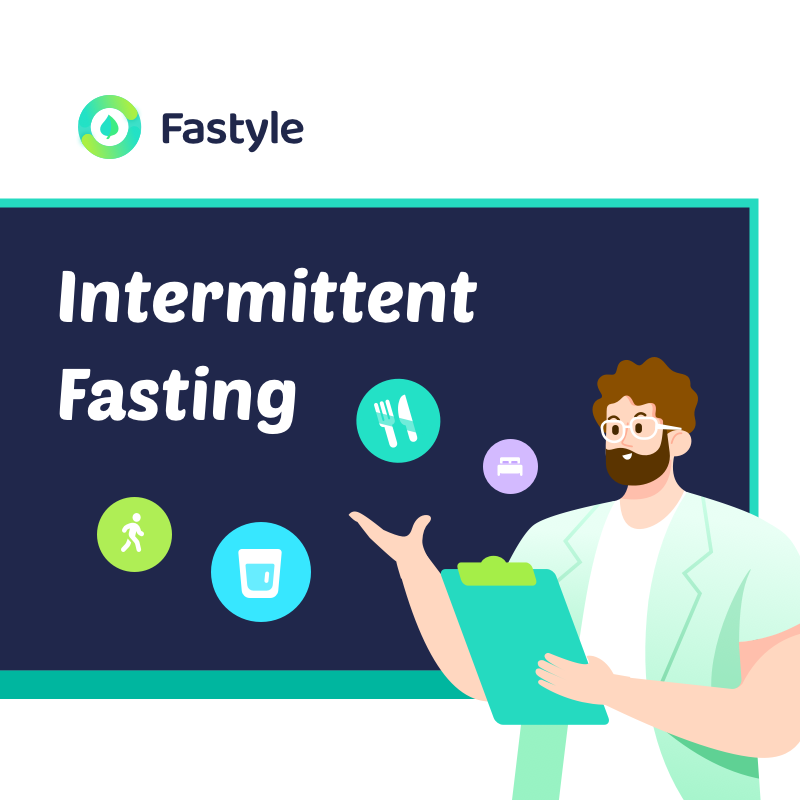When it comes to fasting scheduling, there are two stages.
One is to choose a fasting plan that suits you and is doable.
The other is to plan how to spend each day between fasting and eating windows based on your chosen fasting plan.
In this article, I will introduce the essential steps tailored for your fasting plan and how to schedule your days around your fasting plan.

A must-consider question: is fasting fit for you?
Before you dive into choosing a tailored fasting plan, let’s check if you fall into these populations who are in fact not suitable for intermittent fasting:
- Adolescent < 18 years old, who are still under significant growth.
- Elderly > 65 years old, who are at risk of malnutrition.
- Planning or currently pregnant and breastfeeding.
- People with diabetes and on medication to lower blood glucose level (Type 1 Diabetes and Type 2 Diabetes).
- Current or history of eating disorder, such as anorexia nervosa, bulimia nervosa (binge eating).
- Currently suffering from high blood pressure.
- Having increased nutritional requirement because of some medical treatment, such as post-surgical procedure, on dialysis, chemotherapy or radiotherapy.
- Other conditions that may be affected by your eating.
Note: the list above doesn’t cover all situations that are unfit for intermittent fasting. It’s strongly suggested that you should consult your doctor before deciding to fast.
A step-by-step guide on how to choose your fasting plan
There will be a total of six steps to help you choose a fasting plan tailored to you.
- Choose between part-day fast and full-day fast
- Set a personal goal
- Choose an intensity level – how many days you will fast
- Choose number of hours (length) of your fasting period
- Plan your meals of your eating windows
Step 1. Check the basic information about your lifestyle.
Before deciding your approach to intermittent fasting, spend 5-10 minutes looking at your diary for the week which may influence your choice of a fasting plan. Here are things to take into consideration:
- What’s your working schedule like?
- How many hours do you usually keep working?
- How much time do you usually spend on commuting?
- Are you working in office or off site?
- Is there anything in your working schedule that might affect your eating/fasting window time?
- What foods are available for you to choose while working?
- Where does your eating take place?
- Do you always have meetings or events?
- If your answer is yes, then do they take place at café/room/offsite?
- Will they run overtime/interfere with eating time?
- Will there be food/BYO?
- Do you need to travel regularly?
- Time spent on flight
- Food provided on flight.
- Where will you be eating at destination, dinning out/room service?
- Who will you be eating with?
- Mostly alone.
- Partner.
- Flat mate.
- Kids/family.
- Friends/colleagues at work/social events.
Step 2. Choose between part-day fast and full-day fast.
Before deciding your approach to intermittent fasting, you should probably get to know the different types of intermittent fasting to be able to choose what will work best for you. These can be divided into two groups.
Part-day fasting
This is also known as time-restricted fasting. You will choose to fast for a set number of hours each day, this can be a minimal 12 hours up to 20 hours a day and the rest of the day is spent eating depending on your choice. You can do a part-day fast for 3 to 7 days a week. Common schedules include 12:12, 16:8, 18:6.
This is the most popular intermittent fasting method and can be easily incorporated into your lifestyle. This generally suits:
- Those who generally don’t feel very hungry during the day.
- Busy shift workers, parents.
- Those who travel a lot for work.
- Travelers for holidays.
- People with jobs that can’t do full-day fasting:
- Physically active (i.e. athletes, builders, common labor)
- Requiring complex thinking (i.e. lawyer, doctors)
- Demand top physical performance (i.e. surgeons, pilot)
- People who need to spend mealtime with family, partner or for social occasions.
- Anyone who doesn’t like or has concerns about doing full-day fast.
Full-day fasting
This is also known as periodic fast. You will eat only 25% of your calories needs of the day (total daily energy expenditure), which is approximately 500 calories for women and 600 calories for men. Compared to a part-day fast which you may do it daily, you can do a full-day fast for only 1 to 3 days a week to help you lose weight. such as 5:2, 6:1, or the alternate-day fasting.
If you’re one of the following, then a full-day fast is suitable for you:
- You’re always busy and tend to skip meals or “forget” to eat.
- If you’re always on the go or don’t really have enough time to eat.
- People who travel a lot for work (if this is you, yes, you can do both methods)
- The “over and done with” fasting, who doesn’t like fasting too many days a week.
- People who can’t do part-day fast because they don’t like it or it doesn’t suit them.
- People who don’t need to share mealtime with others regularly.
Mixed method
Of course, you can do both at the same time if doing a single method doesn’t suit you 100%. Combing two methods is also doable with tailored adjustments, which means you need more knowledge on intermittent fasting. You may try this once you’re more familiar with intermittent fasting. For example, you can do 2 to 3 days of part-day fasting combining with 1 to 2 days of full-day fasting a week.
Step 3. Set a personal goal.
Now you have chosen the fasting method to start with, you will need to set a personal goal, whether you want to:
- General health and weight maintenance
- Weight loss of 1 to 5kg OR < 5% body weight
- Weight loss of more than 5kg OR > 5% body weight
Step 4. Choose intensity level – how many days to fast.
Once you have set a personal goal, you can move on to choosing an intensity that you can commit to. Usually, the more weight you wish to lose, the higher intensity you need, in order to achieve the energy deficit for weight loss.
You may choose your intensity of fasting based on your personal goal:
- Light & easy: Part-day fasting a few days a week (~3 days), OR 1 full day fast a week.
- Moving up the ladder: Part-day 3-7 days a week, OR 1-2 days full day fast, OR combination of 2-3 days part-day fast and 1 full day fast.
- Challenger: 5-7 days a week of part-day fast, OR 2-4 full-days fasting, OR combination of 2 full-day fast 2-3 part-day fasts.
The overall idea is the more days you can do a fast, the more calories you will be able to cut from that week to help you lose weight. You may see the different levels of fasting intensity the energy deficit they create in The 16:8 Intermittent Fasting and Lifestyle Plan by the accredited practicing dietitian and nutritionist Jaime Rose Chambers.

Step 5. Choose the day and number of hours you can fast.
Based on your schedule and intensity, you should choose how many days you want to fast. The next is to decide which days. For example, if you are working five days a week, and choose to fast 3-7 days a week, it may be better to fast on a workday when you can schedule your meals based on your 9-5 working schedule, building up the routine. If you have chosen to fast 3 days a week and fasting on workdays may impact your ability to work, you may choose to fast mostly during the weekend to allow yourself more freedom to plan your weekend for fasting. Which day to choose, and how to fast is a very personal decision.
With a full-day fast selected, you will ultimately fast for 24 hours. If you have chosen part-day fasting, you will have to decide how many hours you like to start fasting. For beginners, we recommend you start with a 12-hour fasting window. If it seems manageable, you can then extend your fasting window to 14, 16, 18 hours, or up to 20 hours a day.
Step 6. Plan your meals for your fast.
After deciding your fasting regime, finally, it is time to plan your meals. Although intermittent fasting does not have food restrictions. It is important to plan your meals to help build healthy eating habits, routines and avoid overeating to achieve a calories deficit within the limited eating window. Each fasting regime with a different length of eating window will have slightly different meal scheduling. With a shorter eating window, fewer main meals will be eaten. The idea of planning your meals is to space your meals strategically to avoid overeating and making healthy food choices. Basically, you should clarify how many main meals and snacks you will have during the eating window. I will expand on this in a follow-up Part 2 article.
Choose your fasting plan in minutes with a fasting tool
Do you find any difficulty to come up with your own fasting plan when confronted with piles of questions and considerations like above?
In fact, you have a better choice, that is, determine your fasting plan in minutes with Fastyle used.
Fastyle will require you to finish a questionnaire about your lifestyle, eating habits, weight loss goal,s and intensity and summarize an optimal fasting plan based on the database.

With all the questions answered based on your genuine case, a fasting plan will be recommended to you.
Summary
Before intermittent fasting, you should:
- Check if you are suitable for intermittent fasting
- Have a quick look at your diary and calendar before choosing your fasting plan
- Follow the 6 steps to build your own intermittent fasting plan:
- Check the basic information about your lifestyle.
- Choose between part-day fast and full-day fast.
- Set a personal goal.
- Choose an intensity level – how many days you will fast.
- Choose number of hours (length) of your fasting period.
- Planning your meals of your eating windows.
FOLLOW US
